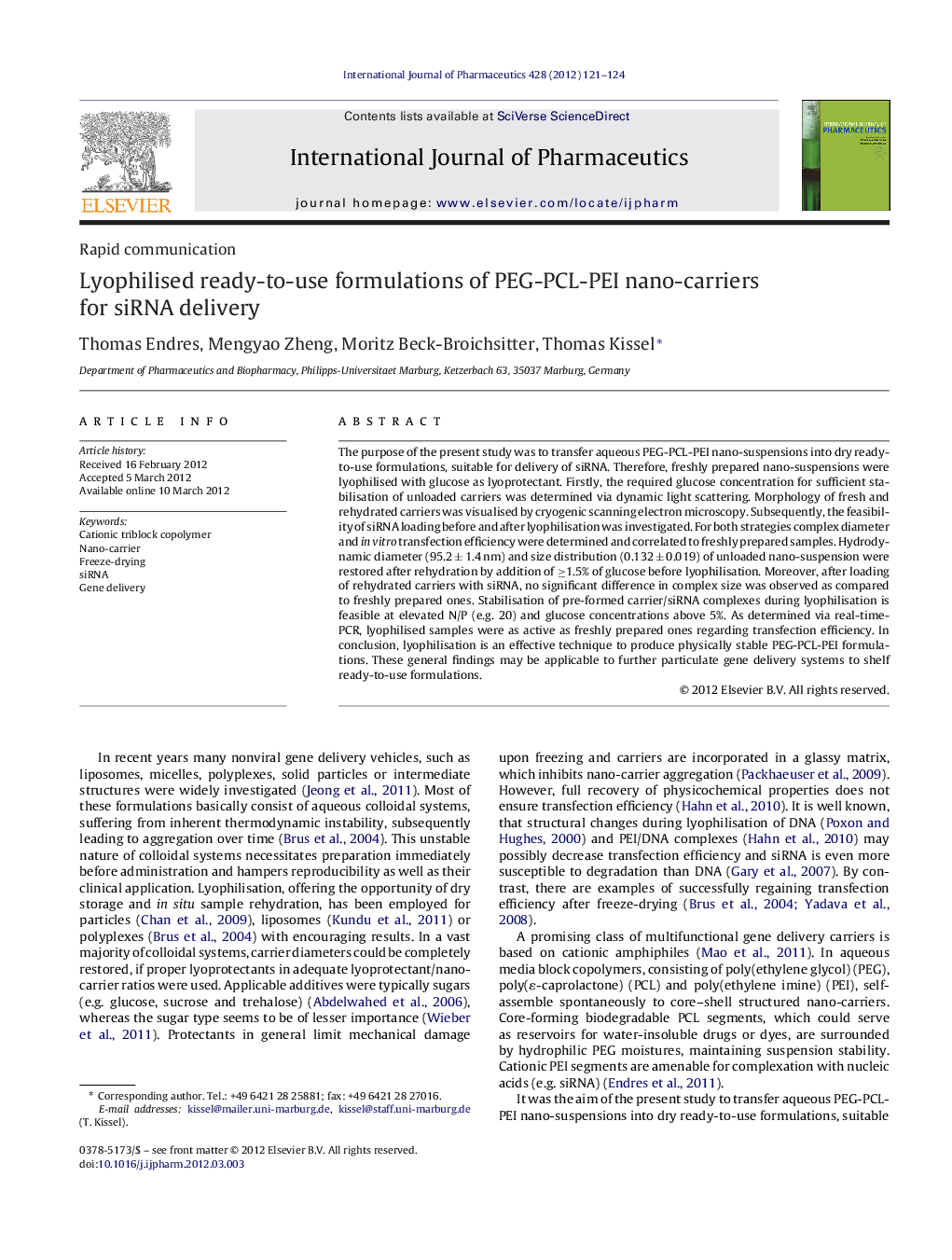| Article ID | Journal | Published Year | Pages | File Type |
|---|---|---|---|---|
| 5820968 | International Journal of Pharmaceutics | 2012 | 4 Pages |
Abstract
The purpose of the present study was to transfer aqueous PEG-PCL-PEI nano-suspensions into dry ready-to-use formulations, suitable for delivery of siRNA. Therefore, freshly prepared nano-suspensions were lyophilised with glucose as lyoprotectant. Firstly, the required glucose concentration for sufficient stabilisation of unloaded carriers was determined via dynamic light scattering. Morphology of fresh and rehydrated carriers was visualised by cryogenic scanning electron microscopy. Subsequently, the feasibility of siRNA loading before and after lyophilisation was investigated. For both strategies complex diameter and in vitro transfection efficiency were determined and correlated to freshly prepared samples. Hydrodynamic diameter (95.2 ± 1.4 nm) and size distribution (0.132 ± 0.019) of unloaded nano-suspension were restored after rehydration by addition of â¥1.5% of glucose before lyophilisation. Moreover, after loading of rehydrated carriers with siRNA, no significant difference in complex size was observed as compared to freshly prepared ones. Stabilisation of pre-formed carrier/siRNA complexes during lyophilisation is feasible at elevated N/P (e.g. 20) and glucose concentrations above 5%. As determined via real-time-PCR, lyophilised samples were as active as freshly prepared ones regarding transfection efficiency. In conclusion, lyophilisation is an effective technique to produce physically stable PEG-PCL-PEI formulations. These general findings may be applicable to further particulate gene delivery systems to shelf ready-to-use formulations.
Related Topics
Health Sciences
Pharmacology, Toxicology and Pharmaceutical Science
Pharmaceutical Science
Authors
Thomas Endres, Mengyao Zheng, Moritz Beck-Broichsitter, Thomas Kissel,
